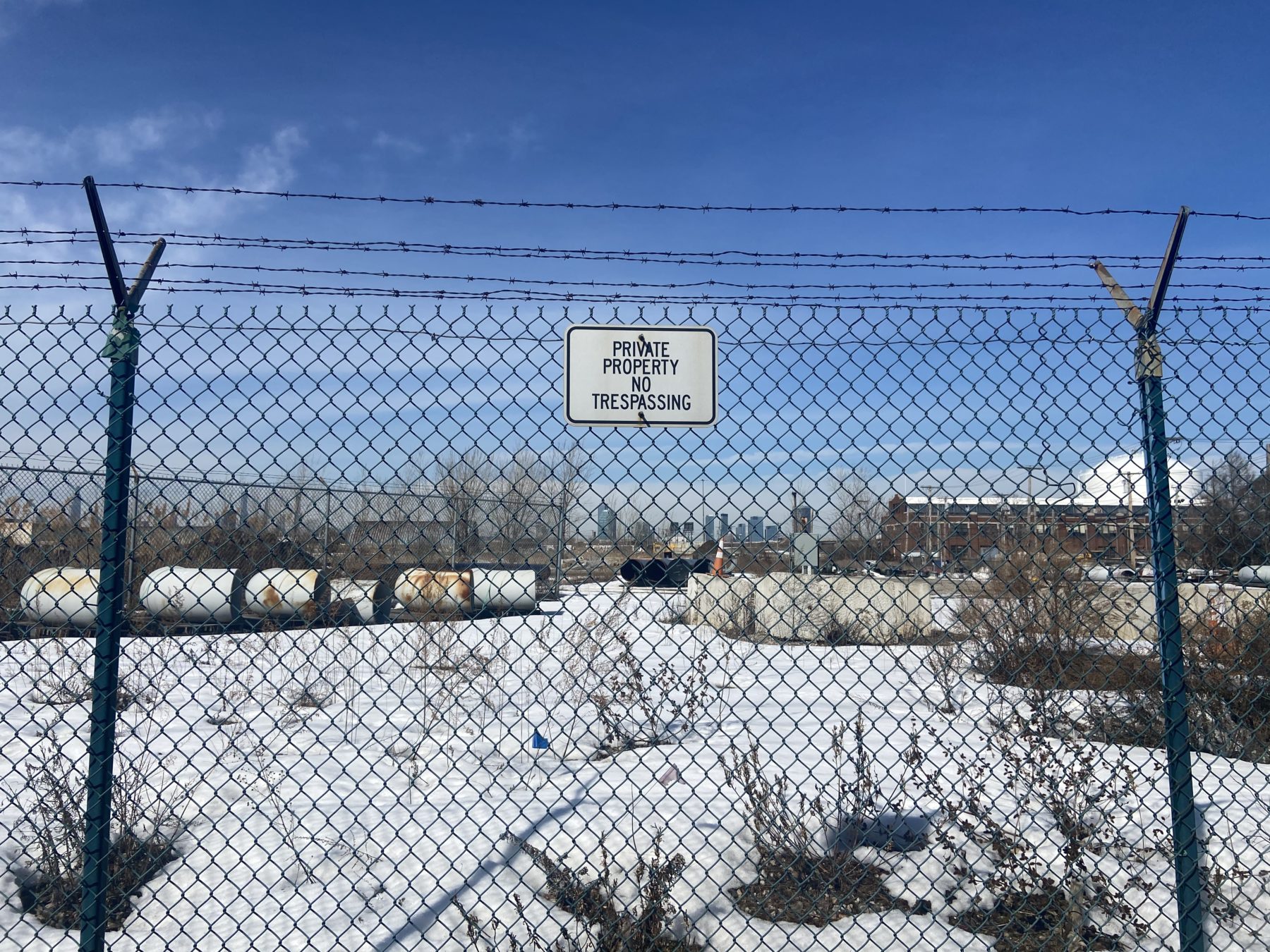Greenpoint residents and grassroots activists have been scrambling to reorganize this week after New York State’s Department of Environmental Conservation (DEC) made a last-minute decision to split up a long-awaited virtual public hearing about a controversial plan to expand a natural-gas storage facility in the Brooklyn neighborhood.
On Monday, March 8, two days ahead of the scheduled hearing, DEC sent out a short but dense email, announcing that instead of one event on the evening of March 10, speakers would be spread across three consecutive hearings, including one in the middle of a weekday.
“It’s completely unacceptable,” said activist Lee Ziesche, who works for the Brooklyn-based environmental organization Sane Energy Project, which has been helping residents prepare for weeks. “I’ve talked to multiple community members who have found the emails and the whole process from DEC very confusing.”
Ziesche’s name is among nearly a thousand on a growing list of co-signers on an open letter to DEC slamming its lack of notice and calling for the deadline for written comments to be extended into April. In response, the agency has agreed to add an additional hearing on Thursday, March 18, in order to accommodate at least 100 speakers, who will each be given a three-minute slot. Written comments may now be submitted until March 22.
The hearings are the first chance outside of several ongoing protests for Greenpoint residents to voice their concerns about National Grid’s push to expand the Greenpoint Energy Center, a liquified natural gas storage facility on the banks of the heavily polluted Newtown Creek.
The utility, which has millions of customers across the Northeast, has applied for a DEC permit to bulk up its operations on the 117-acre site with millions of dollars’ worth of new equipment and the capacity to truck volatile compressed natural gas to and from the facility. It’s the final phase of the Metropolitan Natural Gas Reliability Project, which will connect the facility to a new stretch of pipeline installed between Brownsville and Greenpoint, carrying gas obtained by hydraulic fracturing, or fracking, from Pennsylvania.

A coalition of furious residents – backed by organizations such as the Sane Energy Project and legal experts – are fighting what they dub the North Brooklyn pipeline, along with the Greenpoint expansion, arguing the two are linked and will prolong the city’s fossil-fuel dependence, while delaying the transition to renewables.
It’s expensive for ratepayers, and, some activists fear, could even be explosive. Literally.
An Urban Pipeline
“This is a massive fossil-fuel project,” said Ruhan Nagra, another co-signer to the letter and a lawyer at University Network for Human Rights. The organization is one of those urging DEC to reject the permit bid and do a holistic environmental-impact review.
National Grid denies it’s building new fossil-fuel infrastructure in North Brooklyn despite already installing more than five miles of pipeline under Brownsville, Bedford-Stuyvesant, Bushwick and Williamsburg since May 2017. Another two miles of pipeline, under residential streets, have yet to be built.
“National Grid is seeking to do three different things that are actually one large project,” Nagra said. Taking a segmented approach to environmental approvals allows the company to skirt a now permanent statewide fracking ban and the city’s clean-energy targets, she added.
The utility is also seeking a variance from the New York Fire Department to truck liquefied natural gas through the same neighborhoods, which are home to many low-income and minority communities.
“You’re talking about trucking a highly explosive, volatile material that can cause asphyxiation and freezing burns within a mile radius if there is an accident,” Nagra said. “And doing that in a highly developed, urban area like New York City. It’s totally crazy.”
National Grid insists the project is safe and intended only to bolster the existing system and increase its capacity at times of peak demand during the winter. “It’s a system integrity project,” a National Grid spokesperson said in a statement.
Living “Under Siege”
Greenpoint residents already live with the consequences of decades of unchecked industrial pollution. Newtown Creek, the murky waterway that runs along the neighborhood’s north-west edge, is a federal Superfund site earmarked for clean-up by the Environmental Protection Agency (EPA).
In 1979, a giant, subterranean glob of oil was found under the neighborhood, caused by millions of gallons seeping into the waterway from dozens of refineries along its banks. It remains one of the worst environmental catastrophes in the United States’ history.
Greenpoint Energy Center is on the outskirts of the neighborhood, along the shores of Newtown Creek. The sprawling site, much of which is bare soil strewn with pieces of rusting pipe, is surrounded by a chain-link fence topped with barbed wire. It has two huge white liquified natural gas storage tanks, which look like grounded hot-air balloons. Next door to the site is a Little League field popular with neighborhood kids.
Katherine Thompson, one of the residents who was bumped from March 10 to a later hearing date, remembers her son playing baseball in the shadow of the Maspeth Holders, a pair of 400-foot-high natural-gas storage towers demolished two decades ago.
“It was such a weird thing to be there playing this all-American game,” she says. “You imagine being out in the suburbs in a nice, green Little League field, but there you are in the middle of this industrial wasteland.”
Thompson has always been an active community member and environmentalist but became focused on fighting the North Brooklyn pipeline a year and a half ago, when National Grid announced the project at a community board meeting. The utility had already begun digging in East Williamsburg.
“At that point, there were these huge trenches in the street, and it was obvious something was happening,” Thompson said. “Whole long streets were being shut down.”
Another long-time Greenpoint resident, community board member Trina McKeever, said it felt like the neighborhood was “under siege. . . .There had been no community outreach, no anything,” she said.
The Big Picture
While some residents fear potential trucking accidents and are frustrated by short term inconveniences like construction blocking small businesses, many also say their overarching concern is climate change.
The natural-gas industry is a major source of methane leaks – from extraction, to processing, to transportation, according to the International Energy Agency’s 2020 Methane Tracker. Roughly a third of the United States’ emissions of the potent greenhouse gas comes from the energy industry, and even distribution pipes leak methane. Still, natural gas is used for cooking and heating in about half of all homes across the county.
“If you put a methane molecule out there today, in the first 20 years it will be about 80 times more powerful than a carbon-dioxide molecule,” said Suzanne Mattei, an energy policy analyst at The Institute for Energy Economics and Financial Analysis (IEEFA).
Five years ago natural gas was still considered a viable “bridge” fuel to renewable energy sources, such as wind, solar, and hydroelectricity, said Mattei, a lawyer and former regional director of the New York Department of Environmental Conservation. Now, she said, the science, the market and public sentiment have shifted towards more nimble, cleaner technology.
In January, New York City Mayor Bill de Blasio signaled a citywide ban on gas hookups in new buildings by 2030, and the Biden administration has already set an ambitious zero-carbon-emissions target for 2035, pledging trillions of dollars to get there.
“You’re seeing more and more utilities jump straight … to renewables, and skipping natural gas,” said Mattei. “There may be times when you need to repair something, but in terms of building new things, I would think that an extremely close scrutiny of that should occur, because that is just not the way the energy world is moving now.”
In the early 2000s, Greenpoint residents organized to stop a power plant being built on the banks of the East River; they have fought tirelessly for decades for waterfront public parks. Many are hopeful the upcoming DEC hearings will herald another victory.
DEC confirmed it is reviewing National Grid’s permit application and that it has received thousands of written comments since the application was filed in May 2020. The agency has not set a date to announce its final decision.
“I think it’s going as well as it can to be organizing against a giant fracked-gas storage facility during a pandemic,” said Ziesche. “The big pipelines are getting the attention, but it’s the smaller ones that add up. This is the climate fight here in New York City.”
About the author(s)
Joanna Robin is an Australian journalist and graduate student at Columbia Journalism School in New York. Before relocating in 2020, she was the Melbourne assistant editor at Broadsheet, Australia’s premier digital cultural publication, where she previously was subeditor.



